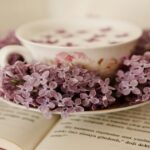Tea candles, also known as tealights, are small candles typically encased in a thin metal or plastic cup, allowing the candle to liquefy completely while lit. They are a popular choice for their versatility, affordability, and the cozy ambiance they create. But there’s much more to these tiny light sources than meets the eye. Let’s dive deep into the world of tea candles and explore their history, types, uses, and much more.
History of Tea Candles
Origins and Evolution
Tea candles trace their origins back to Japan, where they were initially used to keep tea warm during tea ceremonies. Over time, their practical uses expanded, and they became popular for various decorative and functional purposes.
Cultural Significance
In different cultures, tea candles have been used in ceremonies and celebrations, symbolizing light and warmth. They are often associated with spiritual and religious practices, adding a serene glow to rituals and gatherings.
Types of Tea Candles
Standard Tea Candles
These are the most common type, typically unscented and used for general purposes such as warming food or decorative lighting.
Scented Tea Candles
Infused with essential oils or fragrances, these candles add a pleasant aroma to your space, perfect for creating a relaxing atmosphere.
Floating Tea Candles
Designed to float on water, these candles are popular for decorative displays, especially in bowls or fountains during special events.
LED Tea Candles
A modern twist, these battery-operated candles mimic the appearance of real tea candles without the fire hazard, making them ideal for long-term use and child-friendly environments.
Materials and Ingredients
Wax Types
Tea candles are commonly made from paraffin wax, soy wax, or beeswax. Each type has its own burning characteristics and environmental impact.
Wicks and Their Importance
The wick is crucial for a consistent burn. Cotton wicks are most common, but wooden wicks are also used for a more natural look and crackling sound.
Additives and Scents
To enhance the candle’s performance and aroma, additives such as stearic acid are often included, along with various scents derived from essential oils or synthetic fragrances.
Uses of Tea Candles
Home Decor
Tea candles are a staple in home decor, providing a soft and inviting light that enhances the ambiance of any room.
Aromatherapy
When combined with essential oils, tea candles can help create a calming environment, perfect for relaxation or meditation.
Special Occasions
They are widely used in weddings, parties, and holiday celebrations to add a touch of elegance and warmth.
Outdoor Ambiance
Tea candles can transform outdoor spaces, making them cozy and inviting for evening gatherings and dinners.
Benefits of Using Tea Candles
Cost-Effective
Tea candles are generally inexpensive, making them a budget-friendly option for lighting and decor.
Versatile and Portable
Their small size and lightweight nature make them easy to move and arrange in various settings.
Enhancing Atmosphere
The gentle flicker of tea candles can instantly create a soothing and intimate atmosphere.
Eco-Friendly Options
Soy and beeswax tea candles offer environmentally friendly alternatives to traditional paraffin candles.
How to Choose the Right Tea Candles
Purpose and Preferences
Consider what you need the candles for—whether it’s for scent, decoration, or functional use.
Scent Selection
Choose scents that complement the environment and personal preferences, from relaxing lavender to invigorating citrus.
Safety Considerations
Always check for high-quality wicks and non-toxic materials to ensure safe burning.
Decorating with Tea Candles
Creative Displays
Combine tea candles with glass holders, lanterns, or decorative trays for an eye-catching display.
DIY Candle Holders
Get creative with DIY projects, using items like mason jars, teacups, or shells to make unique candle holders.
Seasonal Decor Ideas
Incorporate tea candles into your seasonal decor—think pumpkins for fall, pine cones for winter, and floral arrangements for spring.
Tea Candles in Aromatherapy
Essential Oils and Benefits
Using essential oils with tea candles can enhance the therapeutic effects, from reducing stress to improving sleep.
Creating a Relaxing Environment
Place scented tea candles in areas where you unwind, such as the bathroom or bedroom, to promote relaxation.
Best Practices
Ensure proper ventilation and avoid overpowering scents by using a moderate number of candles.
Making Your Own Tea Candles
Essential Supplies
You’ll need wax, wicks, a melting pot, and molds to get started.
Step-by-Step Guide
- Melt the wax.
- Prepare the wicks in the molds.
- Pour the melted wax into the molds.
- Let them cool and set.
Tips for Customization
Add dyes, glitter, or layered scents to personalize your candles.
Safety Tips for Using Tea Candles
Proper Placement
Always place tea candles on a heat-resistant surface, away from flammable materials.
Monitoring and Extinguishing
Never leave burning candles unattended and use a snuffer to extinguish them safely.
Fire Safety Measures
Keep a fire extinguisher nearby and educate everyone in your household on fire safety procedures.
Eco-Friendly Tea Candle Options
Sustainable Materials
Choose candles made from renewable resources like soy or beeswax.
Reusable and Recyclable Choices
Opt for candles in metal or glass holders that can be reused or recycled.
Reducing Waste
Buy in bulk to minimize packaging waste and consider refilling old candle holders with new wax.
Common Myths About Tea Candles
Misconceptions and Truths
Some believe all candles release harmful toxins, but high-quality, natural candles are generally safe.
Safety Myths
Contrary to popular belief, tea candles are not inherently dangerous if used responsibly.
Tea Candles vs. Other Types of Candles
Comparison of Features
Tea candles are smaller and have a shorter burn time compared to pillar or taper candles but offer more versatility.
Pros and Cons
While tea candles are easy to use and affordable, they may not be ideal for long-term lighting needs due to their short lifespan.
Conclusion
Tea candles are a delightful addition to any space, providing warmth, light, and a touch of elegance. Whether you’re using them for decor, aromatherapy, or special occasions, their versatility and charm are undeniable. By understanding their history, types, benefits, and safety considerations, you can make the most of these small yet mighty candles.

